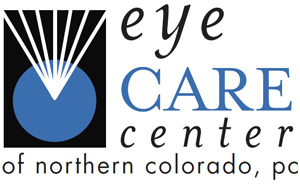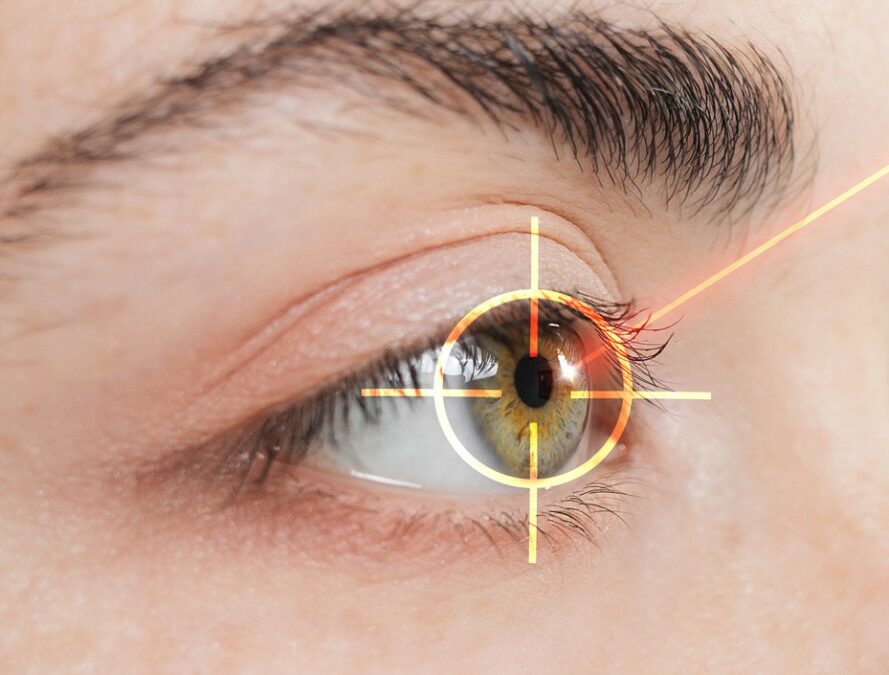Introduction
LASIK eye surgery has become a popular and effective solution for individuals looking to improve their vision and reduce their dependence on glasses or contact lenses. This advanced procedure offers a safe and permanent way to correct common refractive errors such as nearsightedness, farsightedness, and astigmatism. In this blog, we will explore the world of LASIK surgery, covering everything from its benefits and procedure details to recovery and potential risks. By the end of this guide, you will have an understanding of LASIK and how it can enhance your vision and quality of life.
What is LASIK?
LASIK, short for Laser-Assisted In-Situ Keratomileusis, is a surgical procedure that reshapes the cornea to correct refractive errors. These errors occur when the cornea’s shape hinders proper light focusing on the retina, leading to conditions like myopia (nearsightedness), hyperopia (farsightedness), and astigmatism (blurred vision at all distances). By enhancing your eyes’ focusing capabilities, LASIK can often eliminate the need for glasses or contact lenses.
This refractive surgery technique utilizes a laser to address vision problems stemming from refractive errors, where the eye fails to bend light correctly for clear vision.
To achieve clear vision, light must pass through the cornea and lens before landing on the retina. These structures refract light to ensure it reaches the retina accurately, where it is then converted into signals for the brain to interpret as images. However, refractive errors disrupt this process by altering the cornea or lens shape, resulting in blurry vision.
During LASIK, an ophthalmologist utilizes a laser to reshape the cornea, optimizing the focus of light rays onto the retina. This procedure is known for its minimal discomfort. Your eye will be numbed with eye drops, and you will remain awake and alert throughout the entire process. Patients may experience slight discomfort, such as a sensation similar to having something in the eye, during the initial healing period.
Who Is a Good Candidate for LASIK Surgery?
To be eligible for this procedure, you must meet the following five criteria:
- Be at least 21 years old Is this our cutoff?
- Have had a stable vision prescription for the past year
- Be in good health with no eye diseases
- Your refractive error must be one that can be treated with LASIK.
- Your corneas need to be thick enough and healthy, and your overall eye health must be generally good.
Some people are not candidates for LASIK. They include people with:
- an unstable (changing) refractive error
- extreme levels of myopia, hyperopia or astigmatism
- severe dry eye
- corneas that are too thin
- corneal scars or disease
- keratoconus (cone-shaped cornea)
- advanced glaucoma
- a cataract affecting vision
- a history of having certain eye infections
- diabetes that is not controlled well
If you satisfy these requirements, book a LASIK Consultation with us to undergo an eye examination to verify your suitability while addressing any concerns you may have. For additional detailed information about LASIK procedures, you can also refer to our FAQs section.
What to expect with LASIK?
Before the Surgery
During your consultation, your ophthalmologist will conduct a comprehensive examination to assess your suitability for LASIK. Here is an outline of what to expect:
- Vision Testing: Your ophthalmologist will evaluate your current vision status to determine the extent of your refractive error and assess the potential for correction through LASIK.
- Eye Health Evaluation: Your eye doctor will examine your eyes for any underlying issues that could impact the success of the procedure or worsen existing conditions post-surgery. For instance, dry eyes may require special consideration to ensure optimal outcomes.
- Corneal Measurement: Precise measurements of your cornea’s thickness and surface characteristics will be taken to guide the laser technology during the surgical procedure. These measurements are crucial for customizing the treatment to your individual eye anatomy and vision needs.
During Surgery
During the LASIK procedure, which is typically performed in an outpatient surgery center or your ophthalmologist’s office, the following steps are involved:
- Your eye will be numbed with eye drops to ensure comfort during the procedure.
- An eyelid holder is placed on your eye to prevent blinking, along with a suction ring to stabilize the eye. You may feel pressure, similar to firm finger pressure on your eyelid, causing your vision to dim or go black temporarily.
- Your ophthalmologist creates a thin flap in the corneal tissue, which is lifted and folded back.
- You will be instructed to focus on a target light to keep your eyes steady while the cornea is reshaped with a laser. The laser, customized to your eye’s measurements, is utilized for this purpose.
- During the laser application, you may hear a clicking sound. Once the cornea is reshaped, the flap is repositioned and smoothed by the eye surgeon. The flap naturally reattaches within 2 to 3 minutes, initiating the healing process.
After Surgery
- The ophthalmologist may provide a transparent shield for your eye or recommend wearing one while sleeping for several days to aid in eye protection during the healing process.
- It is advisable to head home and rest or take a nap post-surgery.
- You may experience a sensation of scratchiness or a burning feeling in your eyes for a few hours. Special eye drops will be provided to alleviate dryness and promote healing.
What are the risks of LASIK?
LASIK is considered a safe and effective procedure for the majority of patients, but like any surgical procedure, there are potential risks and complications to be aware of. Some of the risks associated with LASIK surgery may include:
- Dry Eyes: Temporary or chronic dry eye syndrome is a side effect of LASIK, causing discomfort and vision fluctuations.
- Glare, Halos, or Double Vision: Some patients may experience glare, halos, or double vision, particularly at night or in low-light conditions.
- Undercorrection or Overcorrection: In some cases, the desired vision correction may not be fully achieved, leading to undercorrection or overcorrection of refractive errors.
- Flap Complications: Issues related to the creation or healing of the corneal flap, such as dislocation, wrinkles, or debris under the flap, can occur.
- Infection: Although rare, there is a risk of developing an infection after LASIK surgery, which may require prompt treatment to prevent complications.
- Regression: In some cases, the initial vision improvement achieved with LASIK may regress over time, necessitating additional procedures or adjustments.
- Visual Disturbances: Some patients may experience visual disturbances, such as ghosting, starbursts, or light sensitivity, which can impact visual quality.
- Corneal Ectasia: This rare but serious complication involves the weakening and bulging of the cornea, leading to vision distortion and potentially requiring further treatment.
It is essential to discuss potential risks and complications before undergoing LASIK surgery to ensure you are well-informed and prepared for the procedure. Regular follow-up appointments and adherence to post-operative care instructions can help minimize the likelihood of complications and optimize visual outcomes.
Can I afford LASIK?
While some providers may offer significantly lower prices, it is crucial to prioritize the quality and expertise of the surgeon over cost when it comes to a procedure as important as LASIK. Eye Care Center of Northern Colorado emphasizes the value of skilled surgeons, cutting-edge technology, and safe practices to deliver optimal results at an affordable rate.
Investing in LASIK can lead to long-term savings compared to the ongoing expenses of glasses and contacts. In many cases, the cost of LASIK for both eyes is equivalent to the expense of glasses and contacts for 8 to 10 years. Eye Care Center of Northern Colorado offers payment plans with zero initial payment and zero percent interest, as LASIK is typically considered an elective procedure not covered by insurance providers. Additionally, individuals can utilize health savings accounts (HSAs) or flexible savings accounts (FSAs) to save pre-tax funds for LASIK surgery.
LASIK Alternatives
LASIK, while a popular and effective vision correction procedure, may not be suitable for everyone. Fortunately, there are several alternatives to LASIK that individuals can consider based on their specific needs and eye health. Some common alternatives to LASIK include:
- PRK (Photorefractive Keratectomy): PRK is a laser eye surgery similar to LASIK but involves removing the outer layer of the cornea before reshaping it with a laser. PRK may be recommended for individuals with thinner corneas or those who are not suitable candidates for LASIK.
- EVO Visian Implantable Contact Lenses (ICL): ICLs are a type of implantable lens placed inside the eye to correct refractive errors. ICLs are suitable for individuals with high degrees of nearsightedness or thin corneas who may not be candidates for LASIK.
- Refractive Lens Exchange (RLE): RLE is a procedure that involves replacing the eye’s natural lens with an artificial intraocular lens to correct refractive errors. RLE is often recommended for individuals with presbyopia or extreme farsightedness who may not benefit from LASIK.
- Monovision: Monovision is a non-surgical alternative where one eye is corrected for distance vision and the other for near vision to address presbyopia or reduce the need for reading glasses.
How long does LASIK last?
No eye doctor can guarantee 20/20 vision post-LASIK surgery. While most patients reduce or eliminate their need for glasses or contacts, it’s important to note that age-related changes can impact vision over time. Just as a new glasses prescription may not last forever, vision may change after LASIK as well.
Studies suggest that the majority of individuals who undergo LASIK remain satisfied with their vision after a decade, though around 35% may require retreatment within that period. Another study focusing on nearsightedness and astigmatism found that approximately 10% of participants experienced age-related vision changes over a 12-year span.
Best LASIK Surgeons in Colorado
It is essential to choose a trusted provider for LASIK surgery. Dr. Verner has performed over 1,000 successful surgeries with a success rate of 95-100% since 2017.
During your consultation with our LASIK specialists, feel free to ask any questions you may have. We aim to provide you with all the information you need to feel comfortable, including details about the procedure, potential side effects and risks, post-operative care, and whether LASIK is the best option for your vision.
We prioritize professional care and safety above all else, ensuring that your vision is our top priority. If LASIK is not the best choice for you, we offer other refractive surgeries or alternative options to improve your vision.
Contact us for a complimentary consultation to determine your candidacy for LASIK and to learn more about the process.

